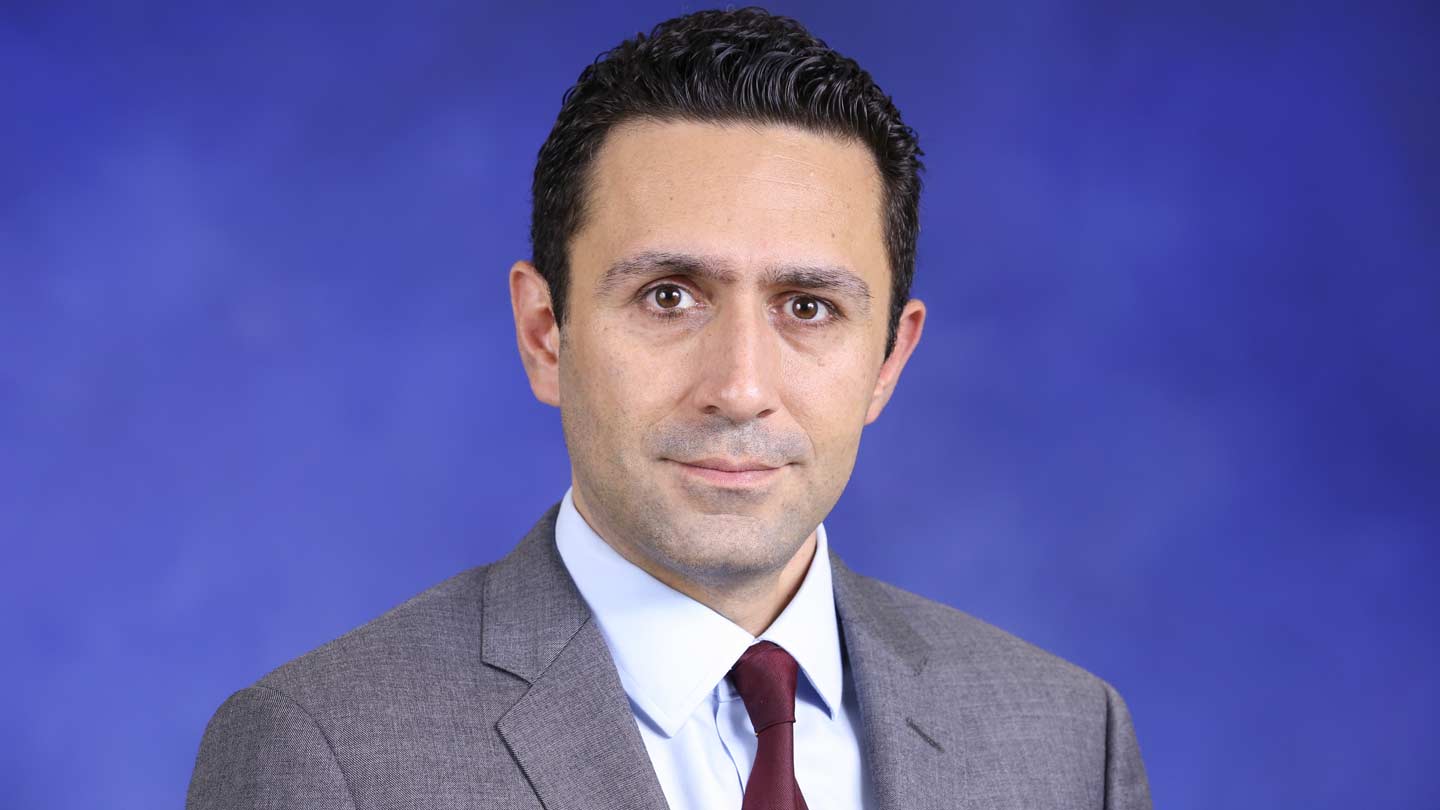
Dr. Kavan Hazeli received a $540,000 National Science Foundation CAREER grant.
Michael Mercier | UAH
Research to develop lightweight multifunctional metallic materials that can mimic structural properties in nature has won an assistant professor at The University of Alabama in Huntsville (UAH) a $540,000 National Science Foundation CAREER grant.
Dr. Kavan Hazeli, an assistant professor of mechanical and aerospace engineering, received the grant for researching metal lattices with hierarchical structures that are created by additive manufacturing (AM) in his Materials, Manufacturing and Mechanics lab in UAH’s Optics Building.
"We are looking into developing multifunctional materials for complex loading conditions by leveraging additive techniques which enable us to build complex geometrical features made of high strength alloys," Dr. Hazeli says. "Manufacturing multifunctional metals through the structural hierarchy is foreseen as one of the most promising directions of additive manufacturing."
AM processes, such as selective laser melting, enable the design of geometrically complex parts. That frees design space to include a variety of material properties in one part to deliver additional functional capabilities, such as making materials with mutually exclusive properties like high fracture toughness and high strength or incorporation of an active cooling system.
"The physical and mechanical properties of metallic materials are governed by the atomic arrangement of their crystalline structures," he says. "One major challenge we are addressing is that when small structures are manufactured out of high strength and high melting temperature alloys using a high energy laser, the underling microstructure takes on a complex structure and the effect on overall performance is not trivial."
The mechanical properties of additively manufactured lattice structures depend upon both the topology of the lattice structure and the base metallic material microstructure, Dr. Hazeli says. "The focus of our research is to understand the interplay between topology and microstructure that is necessary to maximize their potential application."
Dr. Hazeli’s team includes doctoral candidate Behzad Bahrami Babamiri, doctoral candidate Joseph Indeck, master’s student Prathmesh Anantwar and Andrew Minor, who graduated with a master’s degree.
"This research has been heavily relying on my student’s capability in understanding and conducting the principals of the mechanics of materials and manufacturing," he says.
The team’s work includes application of natural properties such as those of bone, which has the ability to resist the growth of small cracks through crack bridging and crack deflection, to additive metallic structures.
"What if we do the same thing and solve functional problems by adaptivity to local conditions and relying on unique geometry and material properties?" Dr. Hazeli asks.
The first generation of metal with hierarchical structures similar to biological systems was inspired from bone and sea sponges, Dr. Hazeli says, and manufacturing cellular materials immediately delivered specific benefits including light weight. The open spaces created in cellular metal have been used to control heat transfer and liquid flow.
"Think about heat exchangers and active cooling liners used in regeneratively cooling combustion chambers," he says. "This is already a big win! We can do more things with materials with hierarchical structures compared to fully dense solids."
Nature is replete with multifunctional systems. For example, the giant beaks of hornbills aren’t just used to eat. They serve to cool the birds in the desert heat through two primary thermoregulatory strategies: panting, which is evaporative heat loss, and dilation of the blood vessels, which is non-evaporative heat loss.
"In our research, we build multifunctional materials made of super and heavy alloys with structural hierarchy through lattice structures using AM techniques," Dr. Hazeli says.
"When a lattice structure is made of superalloys or heavy alloys, they could provide remarkable properties such as yield strength, fatigue strength and fracture toughness at elevated or cryogenic temperatures," he says. "Yet they would offset the high density of the base material. Empty spaces within the lattice structure enable controlled heat transfer, shock and vibration energy management."
As well, Dr. Hazeli’s team is developing educational tools and techniques to teach mechanical engineering and manufacturing concepts to people with visual impairment.
"We appreciate any input and assistance from whomever who shares the same concern."